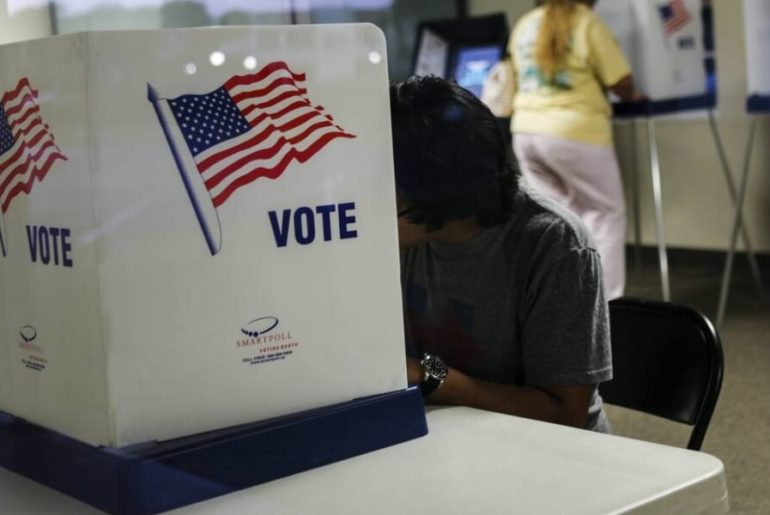The 2020 presidential election is only days away, and as it approaches, it might create confusion for those who didn’t grow up with the country’s electoral system.
Here is a simplified guide of the requirements and election process for the President of the United States of America:
Who Can Become President?
In order to become president, a person must fall under these categories:
- They must be born in the U.S.
- They must be of 35 years of age or older.
- They must have resided in the U.S. for the last 14 years.
Step 1: Primaries and Caucuses
The nomination of the presidential candidate can be done through two systems: caucus or primary elections.
Caucuses are assemblies in towns, districts or counties called by the main political parties in the U.S, Republican and Democrats. Through the caucus method, assembly-goers select their nominee to become a delegate by a showing of hands. It usually involves going to a location that is not usually close to their home, so normally, only the most politically active people prefer to participate.
On the other hand, the primaries, party members vote in a state election. This allows for higher voter participation, even among those who are not politically active.
After the primaries and caucuses, each major party, Democrat and Republican, holds a national convention to select a Presidential nominee. The Presidential candidates campaign throughout the country to win the support of the general population.
Step 2: The General Election
On election day, voters cast ballots in each state. The candidate who has the most votes wins the Popular Vote. However, winning the Popular Vote doesn’t always mean winning the election. In fact, on repeated occasions, the U.S. has chosen a president that has won the Electoral College even if the other candidate won the Popular Vote.
However, the Popular Vote is crucial in determining which “electors” will be in the Electoral College.
Step 3: The Electoral College
Electors from each of the 50 states make up the Electoral College. The person who receives a majority of votes from the “Electoral College” becomes President.
When a voter casts their vote, that vote tells their “electors” how the state should vote for president and vice president. These elected officials, the “electors”, then vote for president and vice president.
In nearly every state, the candidate who gets the most votes wins all the “electoral votes” for that state, and gets that number of voters (or “electors”) in the “Electoral College.” Maine and Nebraska split their electoral votes.
The person who receives a majority of votes from the “Electoral College” becomes President. As the Electoral College consists of 538 electors, a majority of 270 electoral votes is required to elect the President.
The number of electors per state depends on the number of seats a state has in the House of Representatives, plus two votes for its two US Senators. For example, California, gets 55 votes (2 senators and 53 members of the House of Representatives) – the most of any state. Because a state’s number of electors is proportional to its size, it is important for state residents to complete the census every ten years.
How are they elected? Each party determines its own method for selecting electors.
Usually, at first, the political parties choose a handful of people that they would like to nominate to fill the position. Afterwards, the committee typically votes on the candidates they see fit for the position. After these people have been chosen, they are expected to represent the party that they belong to, including that party’s presidential nominee.
What Happens After the General Elections?
Electors themselves are chosen on Election Day, but they do not cast their votes until roughly a month after the elections. In most cases, a projected winner is announced on election night, however, it isn’t always accurate.
After their mid-December voting, the Congress gets together on January 6th to count the electoral votes of each state following the electors’ conference. Then, the members of the House of Representatives and Senate meet to perform the formal count of electoral votes.
Afterwards, the president of the Senate announces which individuals have been elected as President and Vice President of the United States.

